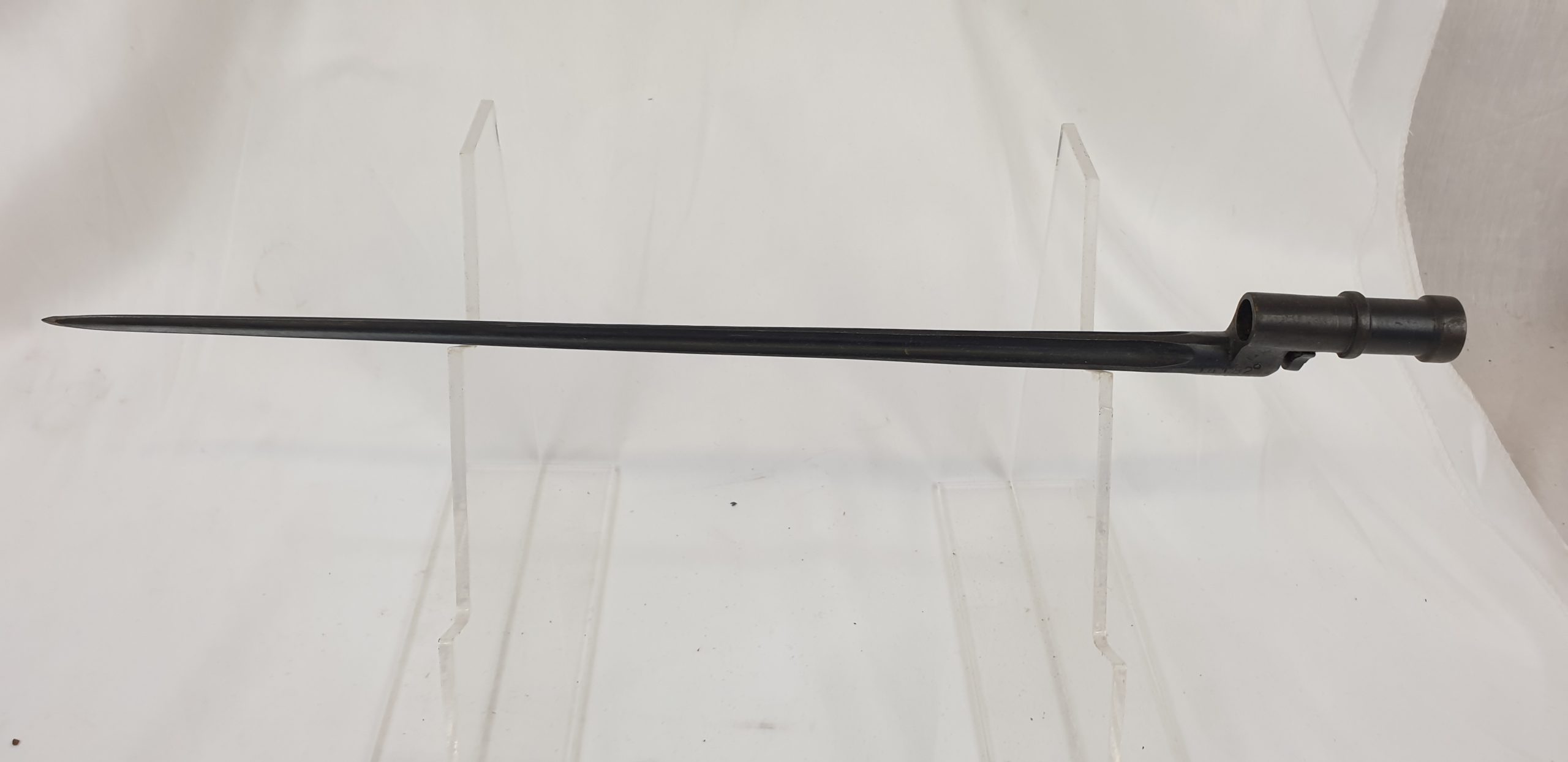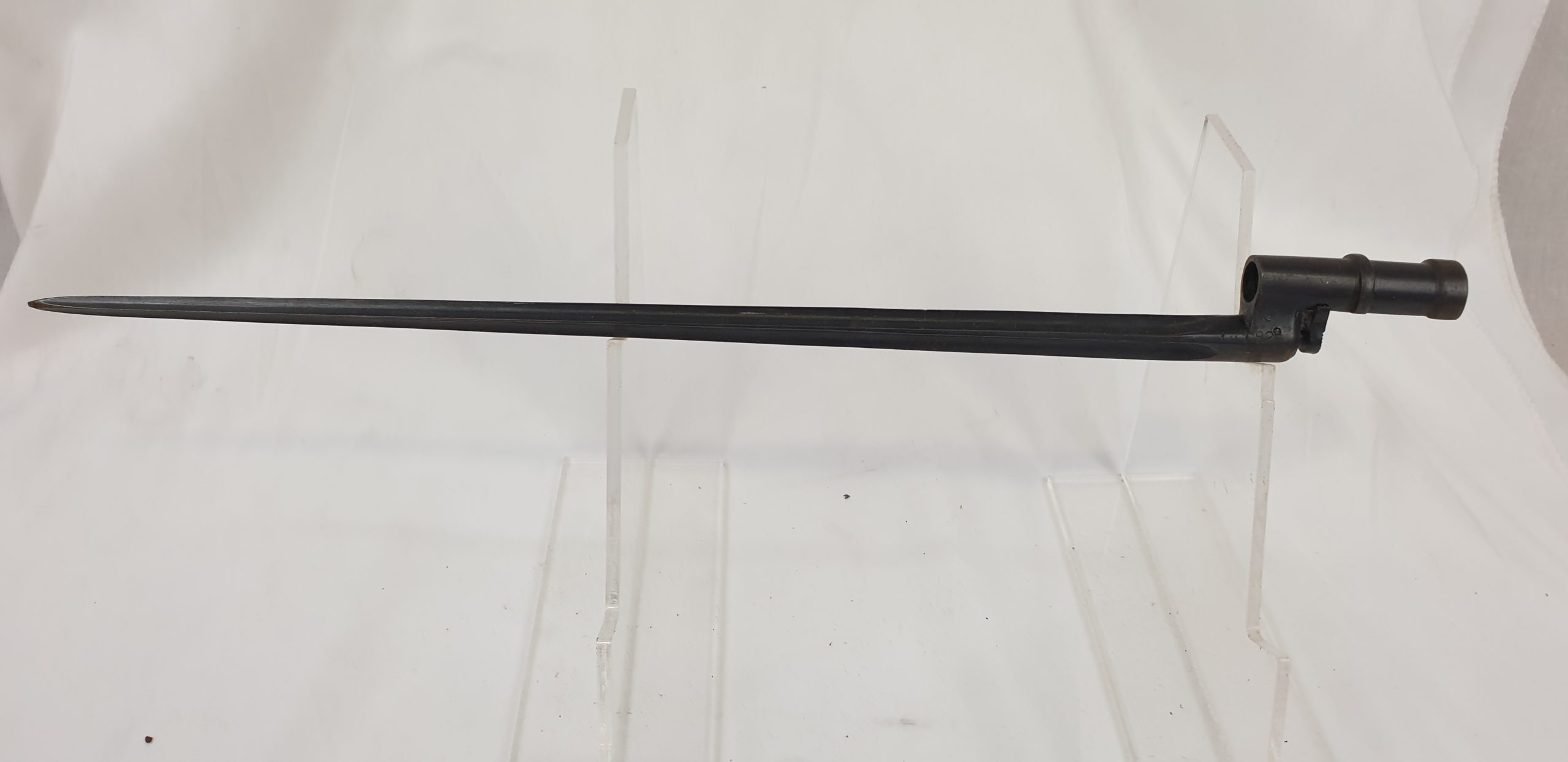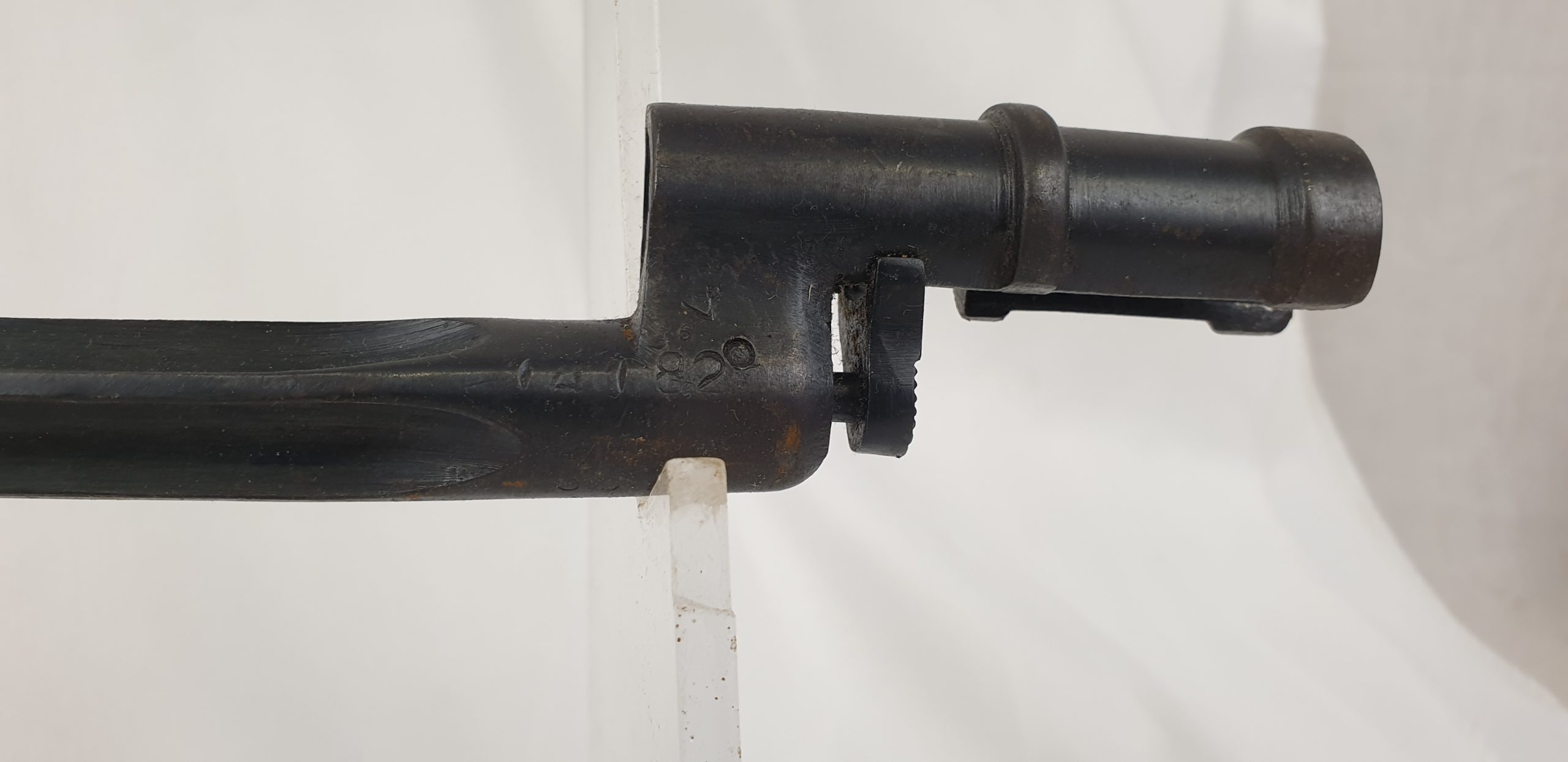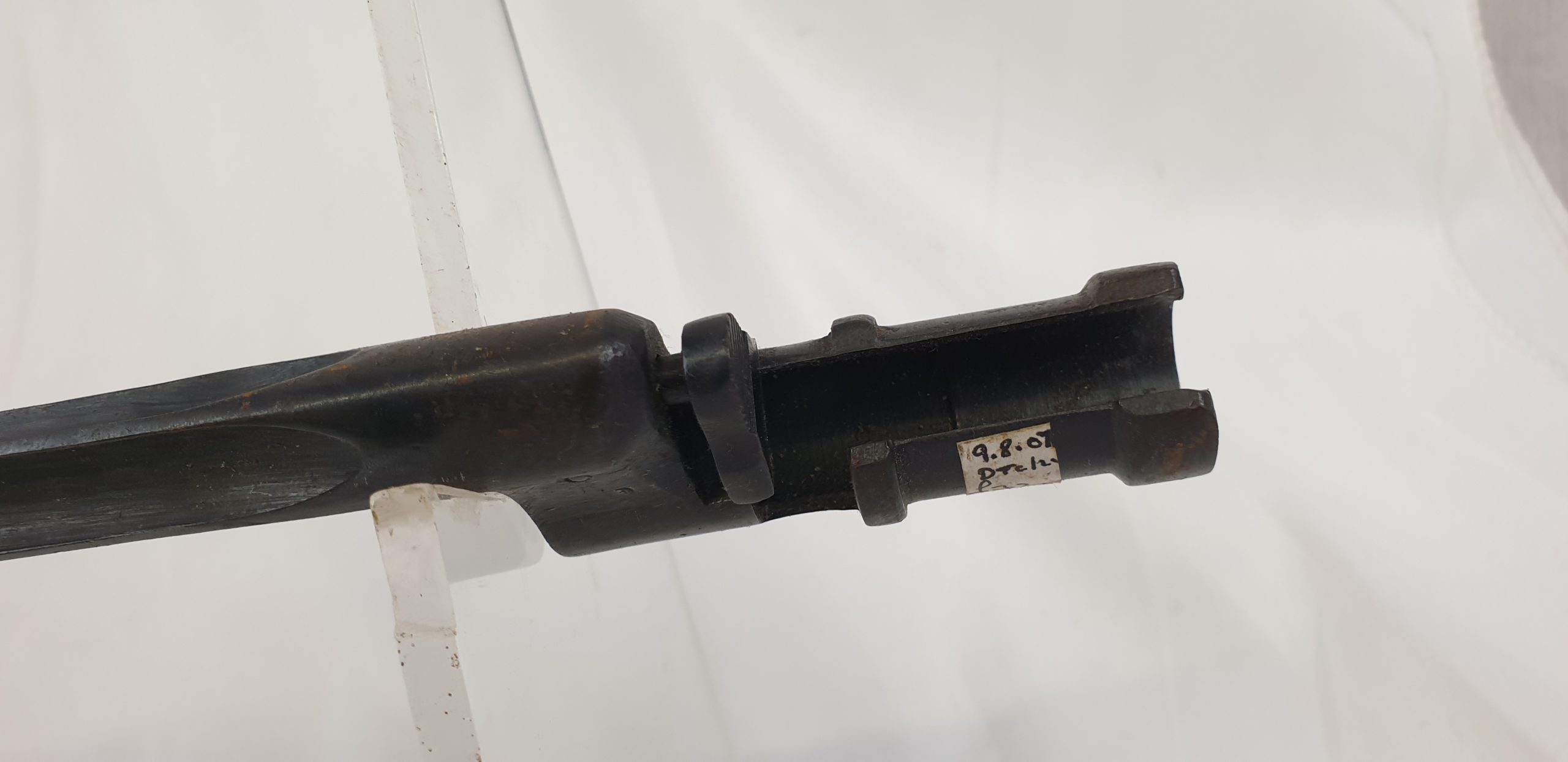~ Soviet Moisin-Nagant Spike Bayonet ~
The Soviet Mosin-Nagant spike bayonet is a historical accessory that was used with the Mosin-Nagant series of bolt-action rifles, which were the standard issue rifles for the Soviet military and many other nations for a considerable portion of the 20th century.
The Mosin-Nagant rifle itself was designed in the late 19th century by Russian and Belgian inventors, Sergei Mosin and Léon Nagant, respectively. The rifle went through several iterations and modifications over the years, and it became the primary firearm for the Russian and later Soviet armed forces during various conflicts, including World War I, the Russian Civil War, and World War II.
The spike bayonet designed for the Mosin-Nagant rifle was a simple yet effective accessory. It consisted of a long, slender metal spike that could be attached to the underside of the rifle’s barrel. The bayonet was usually stored in a slot beneath the rifle’s wooden stock when not in use. In combat, soldiers could quickly extend and lock the bayonet into position, turning the rifle into a makeshift polearm for close combat situations.
The spike bayonet’s design was more utilitarian than ornamental. Its main purpose was to provide a means of defense and offense in close-quarters combat. Soldiers could use the bayonet to stab opponents or even to dig trenches and other defensive structures.
The Mosin-Nagant rifle with its spike bayonet saw action in some of the most significant conflicts of the 20th century, including World War I, the Russian Revolution, the Winter War between the Soviet Union and Finland, and World War II. It became an iconic symbol of Soviet military might and was often associated with the image of the Soviet soldier during these conflicts.
JAQB0






